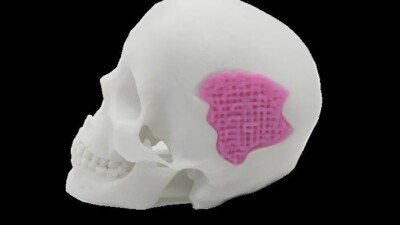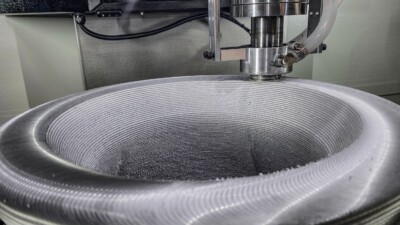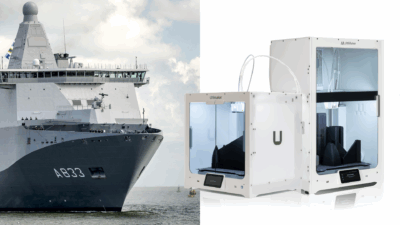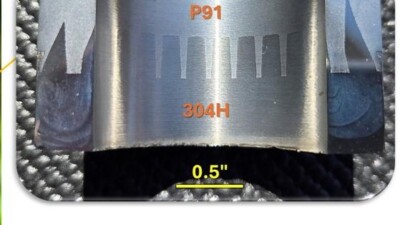How engineers are turning plastic waste into superior surfboards using additive manufacturing.
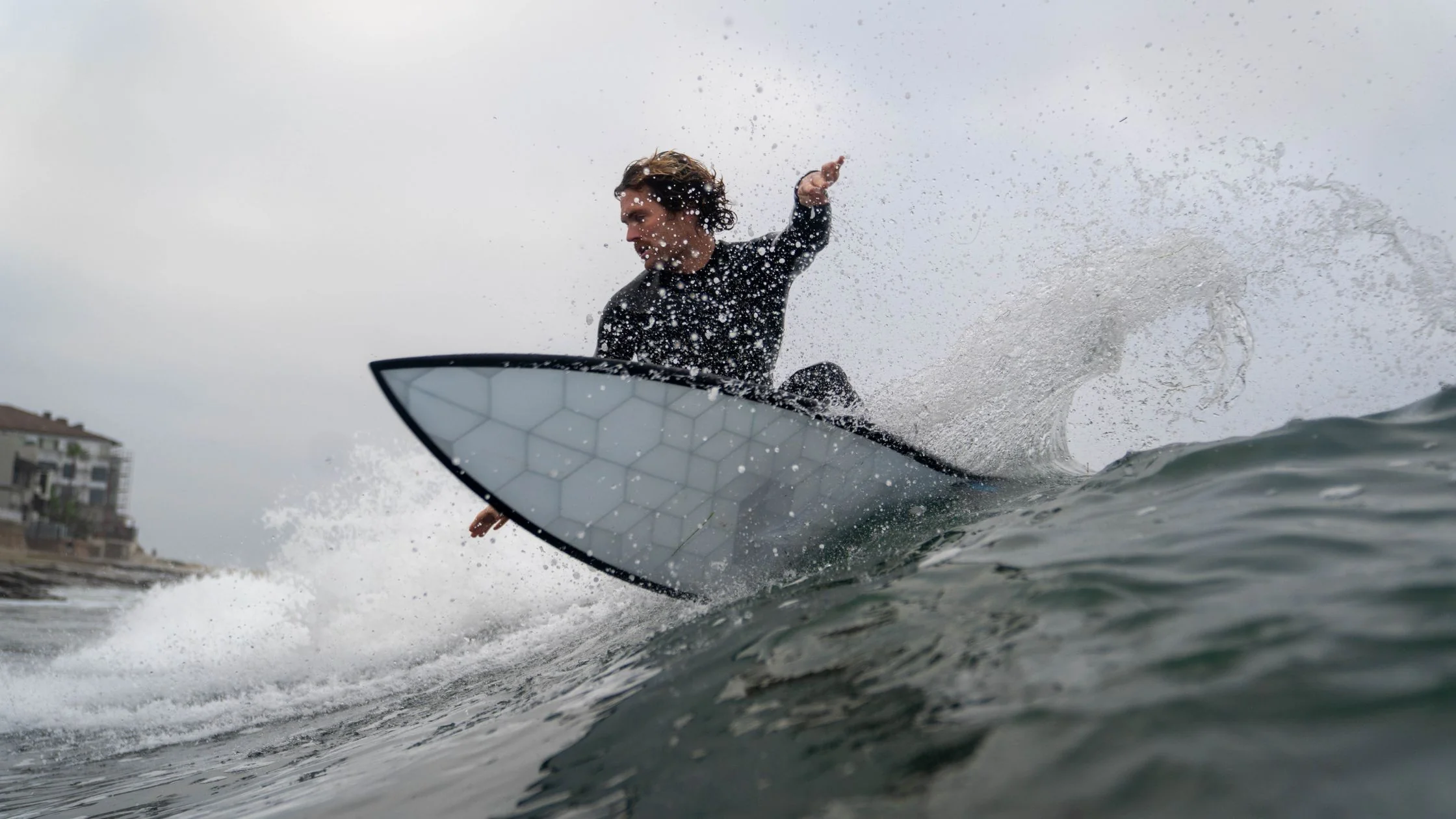
(IMAGE: Wyve)
One thing that always captures my interest when it comes to 3D printing is a great application story. It’s easy to get bogged down in the technical details of material selection, process parameters, or design for additive manufacturing, but it’s also worth remembering that this technology is capable of some truly inspiring innovations in how we make new products.
Recently, at this year’s Hexagon Live, I attended a session that encapsulated that sentiment perfectly. Two French engineers, Paul-Ellie Charles and Benjamin Ostre of Université de Toulon presented their work with the company Wyve, which manufacturers 3D printed surfboards. Here’s what they had to say.
The state of surfboards
Traditional surfboards start with a molded polyurethane or expanded polystyrene foam blank. Shapers with decades of hands-on experience refine these blanks – sometimes using CNC machines – but always finishing the shaping manually. Once they’ve finished shaping the board, they then laminate it with a combination of fiberglass cloth and resin, typically using polyester or epoxy. Suffice it to say that this is a dusty, waste-heavy, and chemically hazardous process, with each step highly dependent on the craftsperson’s skill.
As Ostre explained, “It’s a very empirical process of trial and error. The results are highly variable, and repeatability is almost impossible.” As a result, foam density, stringer stiffness, and resin saturation tend to vary from board to board.
A 3D printed surfboard skeleton
Instead of starting with a foam core, Wyve’s approach uses a 3D-printed skeleton. This internal lattice replaces the foam blank entirely, resulting in enhanced structural rigidity and a geometry that would be impossible to achieve with traditional shaping.
The honeycomb infill, a natural choice for weight-to-stiffness optimization, is their current lattice of choice. But the design freedom of additive manufacturing means that the lattice structure can be adapted for different surfers, waves, or performance goals. In low-stress areas like the nose or behind the fins, the structure can be expanded to save weight while high-load areas, such as under the surfer’s feet, can be reinforced.
This adaptability is only possible through 3D printing, enabling boards to be fitted to surfers the same way that skis or bikes are tuned for body type, skill level, and (in the case of surfing) for specific wave conditions.
“I have quite a hard time working here”
Ostre, whose background is in mechanical engineering, is part of Mapiem Laboratory, where he studies 3D printing, structural optimization, and man-machine interactions. As he described it, the methodology at Mapiem bridges simulation and field testing. Examples of this approach in the context of surfboards include:
- Material Characterizations: Testing PLA and other biopolymers for mechanical performance, water resistance, and degradation in marine conditions.
- Digital Twins: Using 3D scanning, photogrammetry, and reverse engineering software to create precise digital models of the boards.
- Performance Mapping: Equipping boards with sensors to record forces and deflections during actual surfing sessions.
- Iterative Optimization: Feeding real-world data back into simulation models to refine the skeleton design.
In practice, this meant that one PhD student was focused on creating the most accurate digital twin possible, placing material only where it’s needed by matching simulated behavior to reality. Another PhD student created the instrumented surfboard, which is embedded with strain gauges and inertial sensors to measure flex, torsion, and rider forces in real time.
Surfboards are notoriously difficult to test in controlled conditions, since natural waves are inherently inconsistent, and no two rides are the same. To isolate their variables, Charles and the team traveled inland to artificial wave facilities where the same rider can surf the same wave repeatedly, swapping boards between runs to compare stiffness, weight distribution, and flex patterns.
“I have quite a hard time working here,” Charles joked as he played videos of himself riding the instrumented surfboard both on the beach and at the wave pool.
Besides being a great way to spend a day, those expeditions yielded a wealth of data: how much the tail twists under load, how the flex pattern changes with wave speed, and how these factors correlate with the surfer’s muscle activity. The team’s ultimate goal is to use this data to determine the optimal mechanical characteristics for any given surfer–wave pairing, enabling Wyve to print a board to match.
Making Wyves
Wyve uses large-format fused filament fabrication (FFF) printers to produce full-scale skeletons. According to Charles and Ostre, their smaller printers can manage a core in 40 hours for a 5-6 foot board, while 7-8 foot models may take 60 hours.
A newer non-planar printing process — where the Z-axis moves simultaneously with X and Y — cuts that time dramatically, with a 5’11” board printing in about 19 hours. The boards can also be tailored in weight, with heavier builds for powerful, heavy surfers or big-wave conditions, and ultralight builds (as little as 2.2–2.3 kg) for agility in smaller waves.
Once printed, the skeleton is laminated with fiberglass and bio-based epoxy resin using vacuum bagging to control resin volume and ensure complete wet-out without oversaturation. This reduces both material waste and weight variability compared to hand lamination.
Traditional foam boards are prone to dents and dings, and fiberglass skins can chip like glass under impact. According to Charles and Ostre, the printed skeleton eliminates pressure dents and offers better resistance to small impacts. Large forces – such as a heavy rider landing hard on flat water – can still break the board, but field experience apparently suggests that these boards last two to three times longer than conventional competition models.
Closing the loop with plastic waste
Perhaps the most ambitious element of the project that Charles and Ostre described is their attempt to make surfboards from ocean waste plastic. The team has developed a process to collect discarded bottles from beaches, process them into filament, and then 3D print it into usable skeleton components. One bottle yields roughly 10 meters of filament.
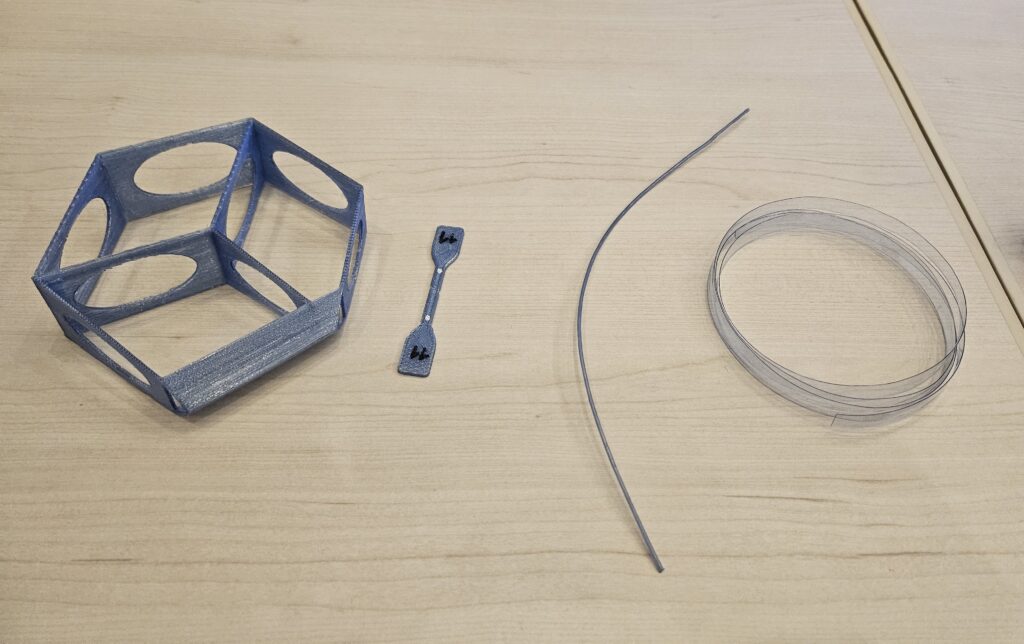
The recycled polymer has shown surprising performance: in some tests, it exhibited twice the stiffness they expected. It’s not yet ready for mass production, due to processing and consistency challenges, but Ostre says the potential is enormous: “There’s so much out there to learn. That’s why it’s so exciting.”
